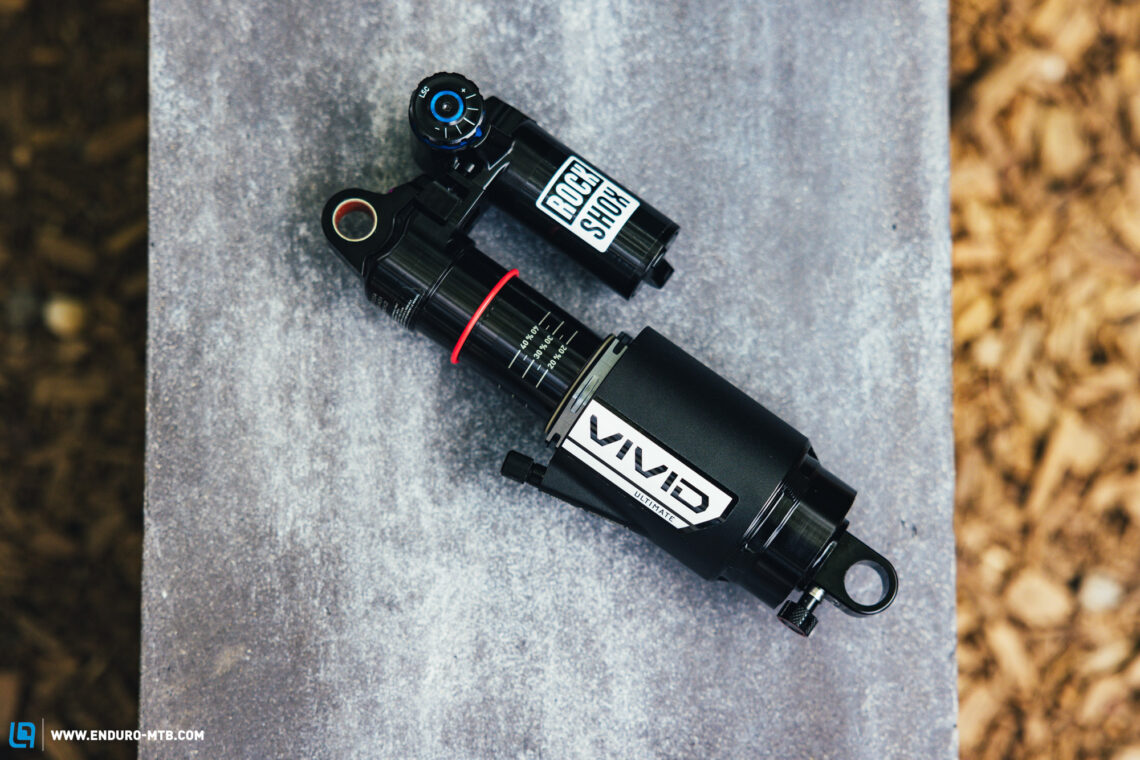First ride review of the 2023 RockShox Vivid air shock – The resurrection
The Vivid has been resurrected! Fans have long awaited the return of RockShox’s high-volume air shock, and now it’s finally here. It’s designed to deliver coil-like performance and is intended for gravity-oriented riding. What’s new on the Vivid, and how does it perform on the trail? Read on to find out.

For a long time, the Vivid Air was the high-performance, high-volume air shock in RockShox’s lineup. Recently, however, it has been replaced by the Super Deluxe or Super Deluxe Coil on DH and enduro bikes. Now the Vivid is making its comeback! RockShox promise to have packed coil-like suppleness into an air shock, with all the associated advantages: weighing just 650 g, it’s around 250 g lighter than a comparable coil model, and it can also be adjusted more easily and accurately via the air chamber instead of replacing the coil. With a price point of € 874, however, you also have to fork out around € 250 more than you would for its coil sprung counterpart. Is it worth the extra cost?

The new RockShox Vivid Ultimate air shock in detail
Holding the RockShox Vivid in your hand, it seems pretty bulky. However, this is required by the shock’s high-volume design, which in turn should give it a more linear, uniform coil-like feel. In addition, the large Vivid uses a large amount of oil, which should improve thermal management.
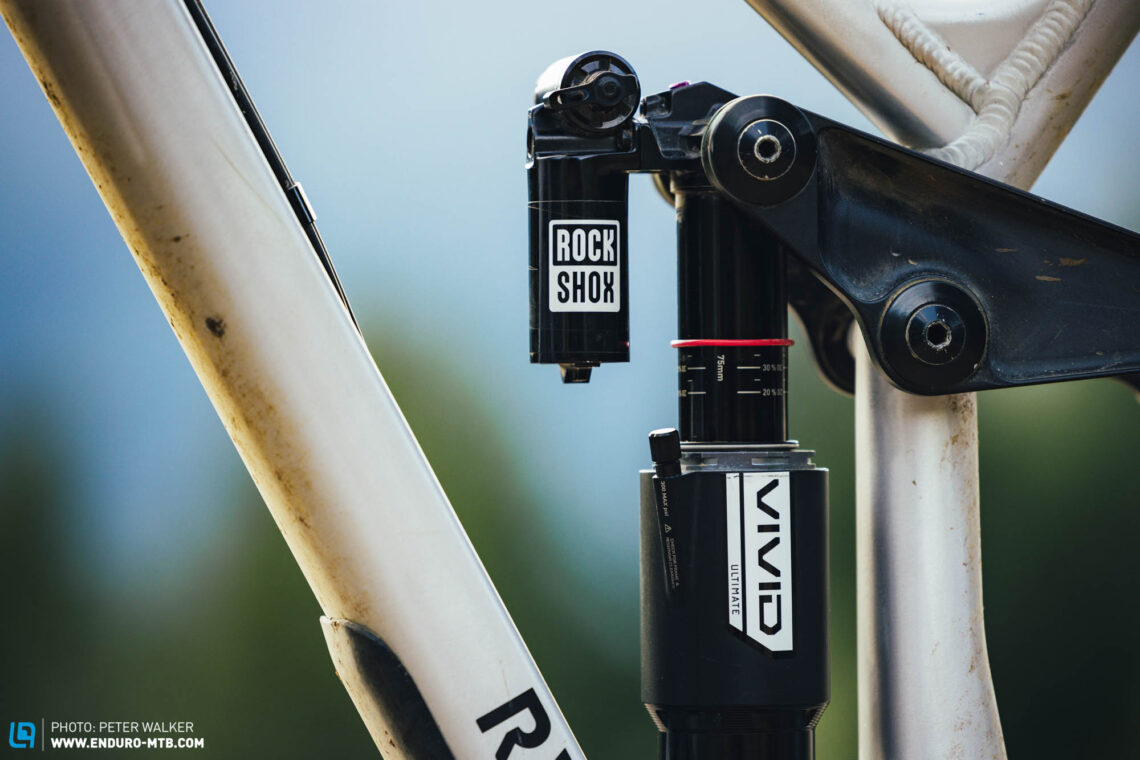
As with most RockShox suspension, the shaft of the Vivid is labelled, which makes it easier for you to adjust the shock according to your weight and your bike by giving you a simple way to check the sag. You have the option of adjusting both the high- and low-speed compression, as well as the rebound. Both compression settings give you five clicks of adjustability, are super easy to reach, and clearly labelled. The low-speed compression (LSC) can be adjusted by hand, whereas the high-speed compression (HSC) requires a 3 mm hex key. The rebound speed can be adjusted via a small dial on the lower end of the shock, offering 20 clicks. It’s easily accessible on most frames. The rebound adjuster is a bit wobbly, but it can be removed and then serves as a 3 mm hex key, which you can use to adjust the HSC and the hydraulic bottom out – very convenient! The clicks of all settings feel crisp and defined, so you always know if you’ve made an adjustment. You’ll also find a lever that allows you to activate the pedalling platform to stiffen up the shock for more efficient pedalling – the so-called threshold lever. If you want to change the progression of the air chamber with the help of volume spacers, the Vivid allows you to install and remove the bottomless tokens without having to remove the entire shock. You can simply pull off the Air Can once you’ve released all the pressure and removed the circlip holding it in place. In total, your adjustment options include rebound, compression x2 (high- and low-speed), and the threshold lever, which is why this model is called the RC2T.

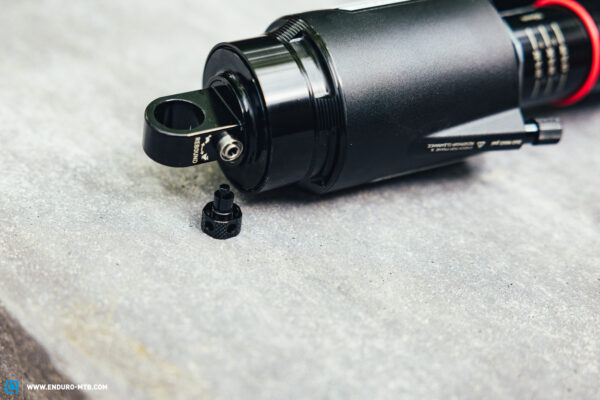
Another feature that you’ll be familiar with from the Super Deluxe models is the adjustable hydraulic bottom out (HBO). This allows you to adjust the damping of the last 20% of the travel by an additional five clicks. However, the Vivid goes one step further with the new Touchdown damping system, which is designed to bypass the compression damping of the first 10% of the travel to provide a particularly sensitive response off the top. Therefore, the degree of damping performed by the shock depends on how deep you’re into the travel. So that you can ride more and spend less time in the shop, RockShox have increased the service intervals to 100 hours instead of the usual 50. When in need of a service at the end of the season, you can also just send it in directly to RockShox by post.
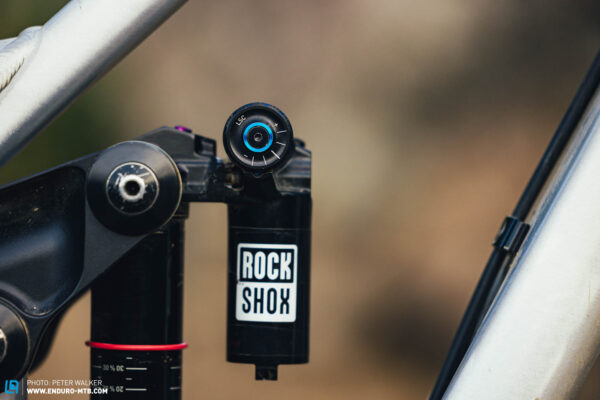
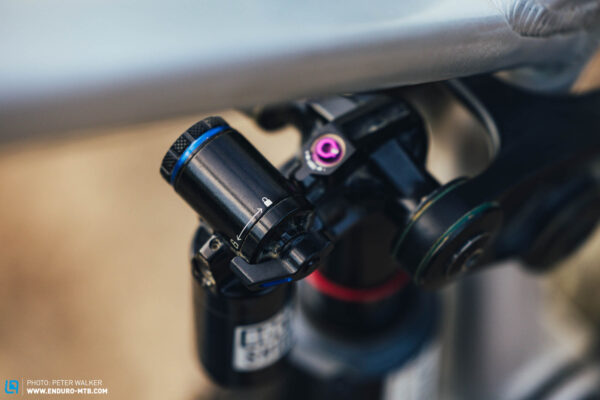
The models of the new RockShox Vivid air shock
The new RockShox Vivid comes in five different versions, which use the brand’s now established model naming convention. All models share the same DebonAir air chamber and adjustable HBO. The differences lies in the damper. As with the new BoXXer fork, end users can only buy the Ultimate models of the new Vivid shock: the Vivid Ultimate, which we introduced you to above, and the Vivid Ultimate DH, which only differs in that it hasn’t got a threshold lever for a pedalling platform. There is no price difference between these two flagship models. The latter replaces the Super Deluxe Ultimate DH in the RockShox lineup.
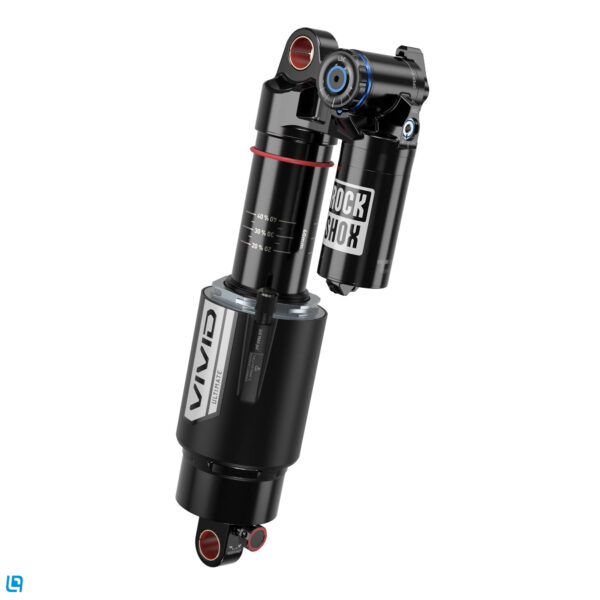

The other three models are only available on the OEM market, i.e. not for end users. With the Vivid Select+, you have to make do without the HSC setting, only allowing you to adjust LSC and rebound. The next model underneath that is the Select, which limits adjustability to the rebound speed. These two models still come with the threshold lever, unlike the RockShox Vivid Base.

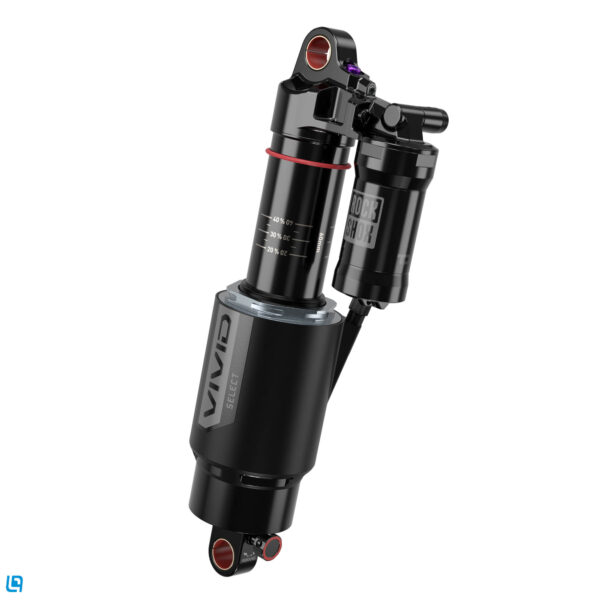

The new RockShox Vivid air shock on the trail
We already had the chance to test the RockShox Vivid on five different bikes: the RAAW Yalla!, Santa Cruz V10, Specialized Turbo Levo, as well as an enduro and an eMTB that aren’t yet on the market ;) Nevertheless, the performance of a shock is largely dependent on the bike and its rear-end kinematics, so your results may vary.
Setting up the shock is super easy. Unfortunately, that isn’t thanks the SRAM trailhead app, as the settings depend too much on the rear end of the bike, but the printed markings on the shaft simply things, nonetheless. The Vivid responds very well to pressure differences and even a few PSI can make a huge difference. So we went down from the usual 30% sag to 28% on some test bikes, which had a big influence on the ride feel! With this in mind, we recommend using a shock pump with a digital gauge and playing around until you find the perfect setup.

On the trail, the RockShox Vivid delivers on its promise and offers a fine response. Especially when braking on rough or bombed-out trails, it generates lots of traction as it remains plush and responsive without passing on unwanted blows to the rider. You get a lot of mid-stroke support and feedback, letting you know exactly how much travel is still available and what the bike is doing underneath you. In addition, it remains consistently low in its travel without suddenly bottoming out and still offering plenty of pop to play around with on the trail, allowing you to boost off of lips and rollers. While we did bottom the shock out a few times, it always mitigated the impact in a defined way instead of just passing it on to the rider. After about 15 days in the rather dry Whistler bike park – despite the occasional rain shower – we couldn’t feel any losses in performance, and it looks as though we might finally have a beefy, high-performance, and durable air shock back on the market.


Conclusion on the RockShox Vivid air shock
The new RockShox Vivid air shock has risen, and it’s here to stay! With its beefy look and high-volume, it delivers a convincing performance on the trail. The Touchdown damper is highly adjustable, allowing you to dial it in for your bike and preferences. Small details like the integrated hex key and the sag indicator make life a whole lot easier, and the promised service intervals of 100 hours let you spend more time on the trails and less time in the shop.
Tops
- widely adjustable damper
- extended 100-hour service interval
- excellent trail performance
Flops
- Only Ultimate models available to end users
For more information, visit SRAM.
